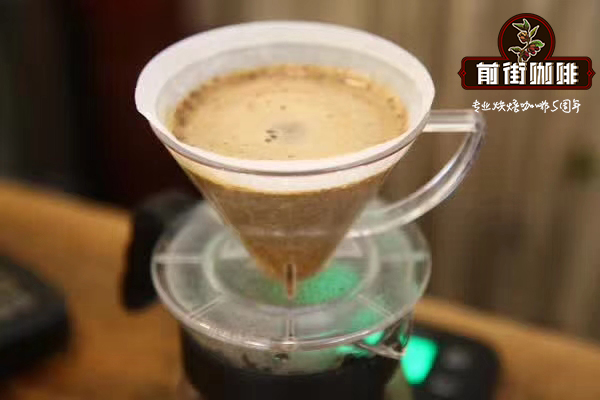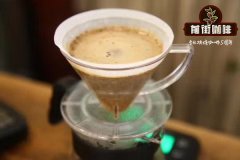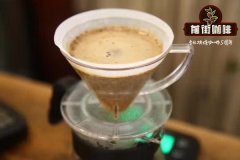What is the difference in flavor and taste between Guji and Sidamo in Ethiopian coffee producing area
There are eight major coffee producing areas in Ethiopia: Lekempti, Limu, Illubabor, Djimmah, Harar, Teppi/Bebeka, Sidamo and Yirgacheffe.
Ethiopian coffee is highly rated in China, especially the Chinese people are particularly interested in and love the producing areas of Sidamo and Yirgacheffe in Ethiopia. Sidama province is located in the south of Ethiopia, with Arsi province in the north, Bale province in the east and Gamu Gofa province in the west.
The Ethiopian administrative region is divided into four grades, the order from big to small is Region, Zone, woreda and kebele. Most of the names of raw coffee beans are named according to this rule. For example, Sakui, which is located in the southeast of Yejia Sheffield in the Sidamo producing area, belongs to Oromia Region → Guji Zone Guji → Shakisso woreda Shakiso → Hambella Hambela.
Guji Guji Zone was established as an independent production area by ECX (Ethiopia Commodity Exchange) in 2010 because of its superior geographical location and cup flavor. Shaqisuo is the most attractive micro-producing area in the Guji producing area, located in the southeast of Yega Snow, with an average elevation of more than 1800 meters above sea level.
Sakuran belongs to a single farm system (we temporarily call it Single Farm Project, SFP for short)
Huakui producing area: Guji Guji, Shakisso,Hambella Humbela
At present, there are about 20 processing plants of various sizes in Hambella producing areas. Hongshun, as a coffee raw bean company in Ethiopia coffee producing area, has set up four sun treatment plants in Ethiopia in cooperation with GUJI zone Hambella since 2016, and conducted a series of studies on sun treatment methods using high quality coffee varieties in the region during the 17x18 production season. There are four manor processing plants in the core production area of Hambella, namely, "Dire" church treatment plant, "mansa" mountain pond treatment plant, "Bobea" red flag treatment plant and "Goro baessa" mountain spring treatment plant. Goro baessa is a small village surrounded by mountains at an altitude of 2280 meters. December is its coffee harvest season. Whenever the mountains are covered with red and mature coffee cherry, the village is neatly arranged on African tanning beds. This is where Sakuran deals with it. Drima Zede candle
Production areas: 90+SNNP, Sidama (Sidamo), ETHIOPIA (Ethiopia)
According to the recently updated map of 90 +, there are 8 SNNP producing areas:
Joseph Brodsky founded Ninety Plus (90 +) in 2006.
90+ adopts a cooperative model with the local manor, with complete control from planting, sampling and harvesting to subsequent processing and cup testing. 90 + exclusive Profile Processing ensures that each coffee bean has a unique and stable flavor trend and quality, while 90 + coffee is unique in the market with the marketing method like high-end red wine.
The 90 + company began to buy the most wonderful coffee cherries from Ethiopian coffee farmers, and started with the best ready-made beans, so there were 90 + representative beans: Aricha and Beloya, which became famous in the first world war, but the experimental results were amazing, and the whole boutique coffee circle was shocked by the rich fruit flavor and high texture.
later
The product line is divided into four series: NinetyPlus Ethiopia, NinetyPlus Panama, Ninety Levelup and NinetyPlus Limited.
At first, the candle appeared in the public eye with 90 + cards, taking the price of being close to the people.
Candlelight coffee raw beans are slightly gray, some places are thick and some places are small, the acidity is soft and strong, mellow and light, sweet and spicy
Unlike ordinary African coffee, Sidamo has clear acidity, smooth taste and delicate floral smell. With a hint of citrus, oak and vanilla, the flavor of tropical fruits such as nectarine is more obvious.
[Huakui] and [Candlestick] are both native species of Ethiopia Heirloon in Ethiopia, and the raw beans are of different sizes, but there are still some differences.
[candle] the tip of the head and tail is much, and the moisture content is good, about 11%, but it is not the kind of SHB bean with high hardness. Because the bean has high density and high hardness, it lengthens the dehydration time in the first stage.
[Huakui 2.0] is relatively uniform, the shape is more round, the bean body is very small, mostly between 14-15 mesh, the body is smaller than Longberry, the green is yellowish.
The results of the cup test are as follows:
[Huakui]: the wet fragrance has a strong aroma of green tea and flowers. Sipping aromas of green tea, strawberries, jasmine, lime and sugar. The palate is light and clean, with soft and fresh acidity. But the end rhyme is not enough, only some sweetness remains in the mouth. It tastes very unbearable, like drinking a cup of fruit tea instead of coffee.
[candle]: there are yellow lemon, flower, black tea and citrus flavor in wet fragrance. There are aromas of black tea, yellow lemon, caramel and jasmine when sipped. At this baking degree, the flavor begins to become rich and solid, the entrance acidity is more elegant, sweetness will be perceived faster, sweetness will be higher, fermented wine, cream, tropical fruits, jackfruit, nectarine, more flavor

Important Notice :
前街咖啡 FrontStreet Coffee has moved to new addredd:
FrontStreet Coffee Address: 315,Donghua East Road,GuangZhou
Tel:020 38364473
- Prev

Introduction of Gedericoga treatment Plant and Bai Mi treatment in Xidamogu, Ethiopia
Ethiopia Sidamo Valley Gedericoga treatment Plant White Honey production National Ethiopia farming area Deri Korcha elevation 1950 2100 m treatment method White Honey Process grade Q1 variety Heirloom flavor jasmine / lemon / citrus / honey / milk chocolate general Ethiopian coffee smallholder's noodles
- Next

The difference between the Gossi Riga Black Soul and the Black Pearl
Costa Rican Black Soul State: Costa Rican name: Laslajas Black Soul production area: central Valley level: SHB treatment: Japanese altitude: 11500 meters above sea level: Caturra Catuai Ras Llajas is located in the central valley production area under the Pos de Alajuela volcanic mountain, which has been experienced by the owner Chacn family for more than 80 years.
Related
- Detailed explanation of Jadeite planting Land in Panamanian Jadeite Manor introduction to the grading system of Jadeite competitive bidding, Red bid, Green bid and Rose Summer
- Story of Coffee planting in Brenka region of Costa Rica Stonehenge Manor anaerobic heavy honey treatment of flavor mouth
- What's on the barrel of Blue Mountain Coffee beans?
- Can American coffee also pull flowers? How to use hot American style to pull out a good-looking pattern?
- Can you make a cold extract with coffee beans? What is the right proportion for cold-extracted coffee formula?
- Indonesian PWN Gold Mandrine Coffee Origin Features Flavor How to Chong? Mandolin coffee is American.
- A brief introduction to the flavor characteristics of Brazilian yellow bourbon coffee beans
- What is the effect of different water quality on the flavor of cold-extracted coffee? What kind of water is best for brewing coffee?
- Why do you think of Rose Summer whenever you mention Panamanian coffee?
- Introduction to the characteristics of authentic blue mountain coffee bean producing areas? What is the CIB Coffee Authority in Jamaica?

